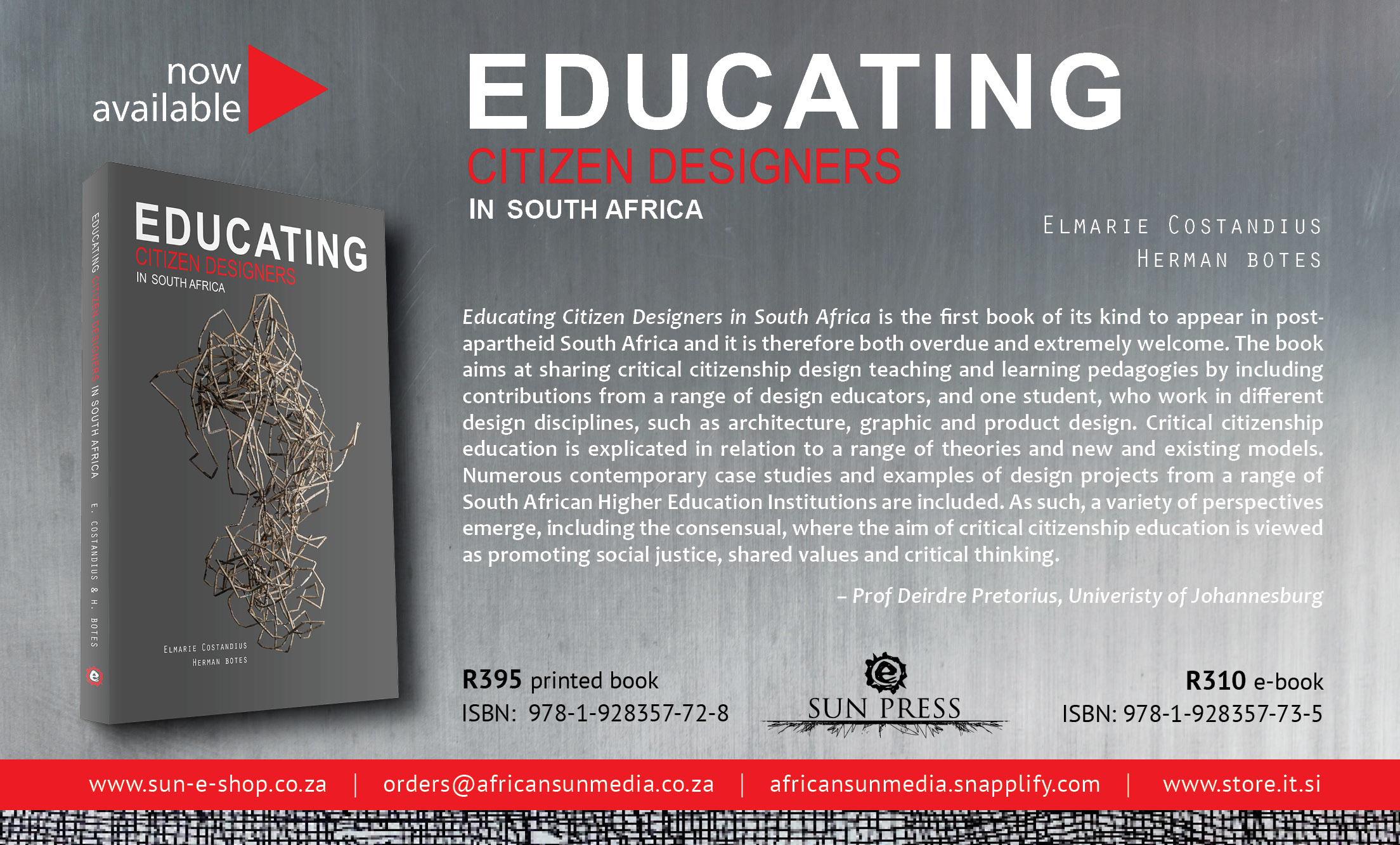Another book in which I have a co-authored a chapter, this time with Ivan Leroy Brown, has just been released! The chapter, no. 5 in the book, explores “A Potential Difference Model for Educating Critical Citizen Designers: The Case Study of the Beegin Appropriate Technology Beekeeping System” (pp. 89-108) and features Ivan’s incredible Beegin beehive.
“Educating Citizen Designers in South Africa is the first book of its kind to appear in postapartheid South Africa and it is therefore both overdue and extremely welcome. The book aims at sharing critical citizenship design teaching and learning pedagogies by including contributions from a range of design educators, and one student, who work in different design disciplines, such as architecture, graphic and product design. Critical citizenship education is explicated in relation to a range of theories and new and existing models. Numerous contemporary case studies and examples of design projects from a range of South African Higher Education Institutions are included. As such, a variety of perspectives emerge, including the consensual, where the aim of critical citizenship education is viewed as promoting social justice, shared values and critical thinking.” – Deirdre Pretorius , University of Johannesburg
Our chapter is introduced as follows:
“Renowned design thinker and educator Ezio Manzini (2010: 8) claims that “[t]he only sustainable way to get out of the current worldwide financial and ecological crisis is to promote new economic models, new production systems, and new ideas of well-being”. Many definitions of design describe a goal-orientated process of “solving problems, meeting needs, improving situations, or creating something new or useful” (Friedman, 2003: 507–508). Design is therefore well placed to deal with the systemic crises Manzini describes; however, the practice of design is extensively shaped by the way it is taught, which does not necessarily generate designers capable of dealing with such systemic complexities. There is therefore a need for design education that provides graduates with a critical mindset, methodologies, tools and skills for appropriate change making embedded in complex contexts. Borrowing from Johnson and Morris’s (2010) framework for critical citizenship education, we describe such graduates as critical citizen designers.
The context of South Africa provides a multitude of opportunities for student designers to use their expertise to bring about appropriate change. However, in order to encourage positive outcomes, an appropriate pedagogy, strengthened through praxis and grounded in economic, social and environmental realities, is required to prepare students for critical and sustainable change making. This chapter explores the education of industrial designers in South Africa utilising a ‘potential difference’ model for critical citizen design. This model attempts to consider stakeholder relationships through a lens of power and love (Kahane, 2010) in order to increase people’s capabilities (Nussbaum, 2011; Sen, 1999) through appropriate technology (Schumacher, 1975). This is contextualised through a case study of the design and implementation of an appropriate technology beekeeping system for urban farmers in Johannesburg.”
For those of you keen on reading the chapter, you can read most of it on here on Google Books
e-shop: http://www.africansunmedia.co.za/Sun-e-Shop/Product-Details/tabid/78/ProductID/536/Default.aspx
ITSI (e-book): https://store.it.si/za/book/educating-citizen-designers-in-south-africa/426400
Snapplify (e-book): https://africansunmedia.snapplify.com/product/9781928357735
Takealot (e-book): https://www.takealot.com/educating-citizen-designers-in-south-africa/PLID52687734
